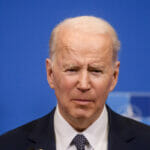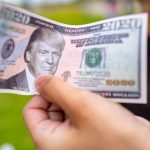In the past half a decade, gold prices were fueled by negative rates. Now gold is driven by geopolitical risks, efforts at gold-backed trade and local prices.
Not so long ago, the conventional wisdom was that the continued recovery of the US economy would support rate hikes and thus the strengthening of the US dollar, which would pave way for gold’s further decline.
It was conventional wisdom at its best; persuasive but flawed. In reality, US recovery does not mean a return to the pre-2008 world, but secular stagnation across the major advanced economies. Consequently, as I have argued since the early 2010s, the Fed’s rate hikes will be lower and have longer intervals than anticipated.
While the Fed has begun its tightening trajectory, central banks in Europe and Japan continue to maintain quantitative easing and record-low interest rates. Historically, periods of low rates – not to speak of negative rates – tend to correlate with gold returns that are significantly higher than their long-term average.
But is the implication that the return of rate hikes will mitigate gold gains? No, not anymore.
Geopolitical risks and gold-backed world trade
After months of gains in 2016, gold decreased to $1,140 in December. Nevertheless, the past quarter has witnessed a wave of new gains as gold recently rallied to a five-month high closing at $1,290.
Today, there are new drivers behind gold as tensions are rising in Syria, North Korea and elsewhere. With increasing global jitters, investors are seeking out traditional havens from geopolitical risks.
There’s more to come. While Marine Le Pen may not win the second round of the French election in May, the bitter political struggle has increased short-term uncertainty in Europe, which will soon also witness the German election and Italy’s parliamentary turmoil. While Trump’s campaign priority was to reset US relations with Russia, the ties between Washington and Moscow are now worse than before.
As investors are escaping to traditional global safe havens, Treasuries are no longer the obvious choice as central banks have turned the bond market into a bubble. Instead, gold, which remains under-represented in many portfolios and under-valued in current prices, seems a safer bet.
The role of gold may also be shifting in world trade. In March, the Russian central bank opened its first overseas office in Beijing to foster Sino-Russian monetary cooperation. The move took place at a time when Moscow is preparing to issue its first federal loan bonds denominated in Chinese renminbi, while Russia – the world’s fourth-largest gold producer after China, Japan and the US – may become a major supplier of gold to China.
All of these scenarios contribute to speculation about efforts to shift to a gold-backed standard of trade and thus bypassing the US dollar.
Local prices drive gold – not US dollar
Today, gold is still priced in dollars and thus assessed in relation to the US currency. On the other hand, some 90% of the physical demand for gold comes from outside the US. So, for all practical purposes, most investors already price gold in their local currency – particularly Chinese renminbi and Indian rupee – not in US dollar.
For non-dollar buyers of gold in the emerging economies, it is the local price that matters most. In 2016, as the dollar strengthened, gold’s return in euro, sterling, Indian rupee and Chinese renminbi was higher than gold’s return in US dollars. According to indicators that track the price of gold from a non-dollar perspective, gold’s return has been on average 2.3% higher per year than the return of gold in dollars for the past decade, driven by periods of dollar strength.
The simple conclusion is that, viewing gold from an exclusive dollar perspective effectively ignores the benefits that global investors – particularly those in emerging economies – derive from adding gold to their portfolio.
Dan Steinbock is the founder of Difference Group and has served as research director of international business at the India, China and America Institute (US) and a visiting fellow at the Shanghai Institute for International Studies (China) and the EU Centre (Singapore). For more, see http://www.differencegroup.net/
The original, slightly shorter version was released by Shanghai Daily on April 20, 2017.











